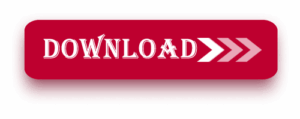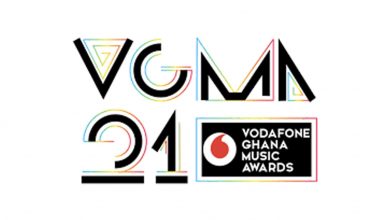Nest Hub interface is old and increasingly broken

In a few days, Google I/O will likely bring the Pixel Tablet to market. Without help from anyone else, the gadget is simply one more Android tablet, yet when it’s associated with its charging dock, which has underlying speakers, it looks a truckload like the Home Center Max. It can control smart homes, just like the Nest Hub Max, and I sure hope it opens the door to a better smart home interface. It was superior.
Everything that has gone wrong with smart home controls can be seen in the Nest Hub: Its interface is hard to understand and doesn’t change, its responses are slow, and they’re sometimes just wrong.
It would appear that Google is using the Pixel Tablet as a chance to start over. From what we’ve seen so far, the Pixel Tablet will run Android and allow you to control your smart home from the Google Home app, just like you can on any other tablet or smartphone. That is excellent news for purchasers of the Pixel Tablet; The Home app has a lot more power than the Nest Hub interface, and the new version, which has been available for public preview since November, has more power and flexibility.
Back up now. Google offers two touchscreen smart displays at this time: the 2019-released Nest Hub Max and the 2021-released second-generation Nest Hub. It likewise still backings the 2018 Home Center point. Every one of the three run a similar connection point, which has forever been a tad janky yet has become progressively busted as Google adds elements and eliminates others.
The Home Centers have touchscreens, which causes you to feel like you should have the option to cooperate with them like you would a tablet. However, as my colleague and resident smart home expert at The Verge, Jennifer Pattison Tuohy, points out, smart displays are really just smart speakers that can show you things: videos from YouTube, photos from your home cameras, videos of your kids, the weather, etc.
There is no guarantee that the Nest Hub will actually carry out your desired action, even if you are able to successfully navigate the interface. Most interface elements send a simulated voice command, which Google Assistant must parse in real time based on who is asking, rather than being hard-coded to do what you expect them to do.
For instance, a feature that was added to the Nest Hub in 2021 that resembles an app drawer contains a Games icon for the time being. Assuming that my proofreader, Dan Seifert, presses the symbol on his Home Center point Max, it opens the Games sheet, which is it should’s specialty. When I press Games on my Nest Hub Max, the Game Cam video feed from the Nest camera in my game room appears. The button doesn’t have the foggiest idea what it should do.
Another instance: The Nest Hub Max cannot hear me say “Hey Google” unless I raise my voice half the time. The “Hey Google” sensitivity slider is located in the Google Home app. The Nest Hub Max recited the definition of sensitivity as if I had said, “Hey Google, sensitivity” when I increased it by one level on my phone. Whether it actually altered the mic’s sensitivity is unknown to me.
After integrating Duo video calling into the Nest Hub Max, Google merged Duo with Meet without informing the Nest Hub, which continues to display a Duo icon. The Nest Hub does not know how to select video call when I tap my wife’s name in Household Contacts. When I asked it to call me by tapping my profile picture earlier, it called a completely different Nathan Edwards, one of many men with my name that I have never met but have in my contact list because I receive emails from them. I just used the icon to launch Duo. “Who do you want to call?” the assistant inquired. I said, “Me,” trusting it would send a video call to my telephone. Instead, it brought up a list of playlists and albums called “me” on Spotify.
One more large issue here is that you can’t seriously redo the connection point, either on the gadget or in the Google Home application. The best way to reorder rooms and gadgets is to rename them so they appear prior in the letter set. Google has at long last fixed this in the public see of the Home application, which permits you to add gadgets and gatherings as top choices and — starting a long time prior — reorder them. That choice still can’t seem to show up on the Home Center.
The Nest Hub’s interface was full of tiles advertising games like Feed My Fish and Baby Shark Stories when Google was pushing games there. I was unable to excuse them. The tiles couldn’t even be moved to the right more. I couldn’t disable them or change them in the content filters or anywhere else in the settings. Music, videos, and news could all be turned off, but games couldn’t be turned off.
Google has added a News tile to my interface now that games are no longer supported, which is a relief. The News tile typically displays headlines about people being shot and killed because I live in the United States. I am unable to remove this News tile from my interface and change its sources.
In view of the Home Center point Max’s restricted handling power, the way that it’s not exactly intended for contact, and the way that it needs to help numerous clients, you need to utilize the Google Home application on a telephone or tablet to change the majority of its settings in any case, and it’s a long way from clear where some random choice resides. Is it set in your user account settings? What are the settings of the device? Settings for assistants? Home settings? Nobody is aware.
Take that tile for News: I can tap the card for the Nest Hub Max when I open Google Home on my phone. I then tap Block news in Notifications & Digital Wellbeing, Digital Wellbeing, Filters, Nest Hub Max (again), and Podcasts. This prevents audio news broadcasts but has no effect on the News card.
I had to create Google accounts for my elementary-aged children and teach the Nest Hub Max to recognize their faces and voices in order to set up meaningful parental controls, which Google introduced in November 2022, more than three years after I got my Nest Hub Max. The Nest Hub Max still has options that aren’t available when parental controls and downtime are turned on. It simply indicates that I heard “Hey Google, play Baby Shark Stories” and “I’m sorry, I can’t do that while content restrictions are on” 500 times per week until my children forgot about it.
In case I need to relax, there is also a tile labeled “meditations to try.” I’m very relaxed. You are calm, dude.
We know the Pixel Tablet runs Android, and we realize that the Google Home application is getting an upgrade, and that implies the tablet will be far superior situated to do everything I wish the Home Center point improved. In addition, based on previews, the updated Home app addresses the majority of my issues with the Nest Hub interface for Pixel Tablet users.
However, the Nest Hubs will not be discontinued. You will still require a separate Matter controller and Thread border router for your smart home unless the Pixel Tablet has a hidden Nest speaker in its charging dock, which, to be clear, would rule. The second-generation Hub and the Hub Max are both Thread border routers, and all Nest Hubs are Matter controllers. Google is unlikely to discontinue its existing smart displays just because it is launching a new tablet because it already has speakers, mesh nodes, and the Nest Pro Wi-Fi, which are all compatible with Matter controllers and Thread border routers, available.
Since Matter has been incorporated into Google Home for the first time at this I/O, I would be surprised if Google did not mention it. The Google Home app update and possibly even the script editor are likely to be released simultaneously if Google launches the Pixel Tablet. With another tablet, another Home application, and another Matter concentration, it’d be profoundly odd to leave the Home Center in its current janky state.
There’s motivation to be hopeful. Fuchsia OS, developed by Google, has taken the place of the Nest Hub operating system over the past two years: The Nest Hub Max received it in 2022, the second-generation Nest Hub in May 2023, and the first-generation Nest Hub in 2021. This means that, just prior to Google I/O, all three Nest Hubs will use the same code base for the first time in two years. Why put in all that effort without changing the interface? For the past two years, we have wondered. The apparent neglect could be explained, but not excused by it; Why maintain something when it will soon be replaced?
That they have screens is nice. However, the presence of touchscreens is misleading: it’s almost in every case quicker and simpler to converse with them than to utilize the touch connection point, and you’re bound to come by the outcomes you need.
This is in part due to the interface design of the Nest Hub, which hasn’t changed much since 2020. There are a number of tabs along the top of the main screen, and each tab contains a number of cards. There’s an outline page, a home control page, one for media, one for correspondence, etc. However, because they must be large enough to be seen from across the room, the information density is extremely low, necessitating numerous swipes and taps to perform any desired action.
The Google Home App’s public preview as of May 2, 2023 is displayed on an Android tablet next to the Nest Hub Max.






